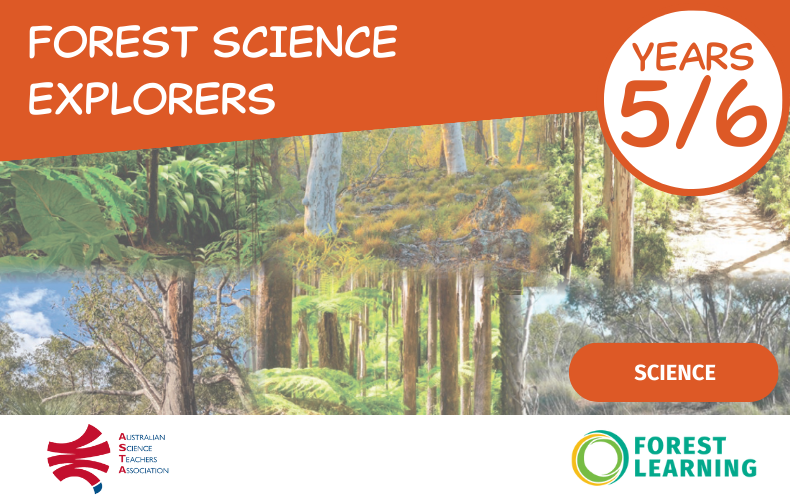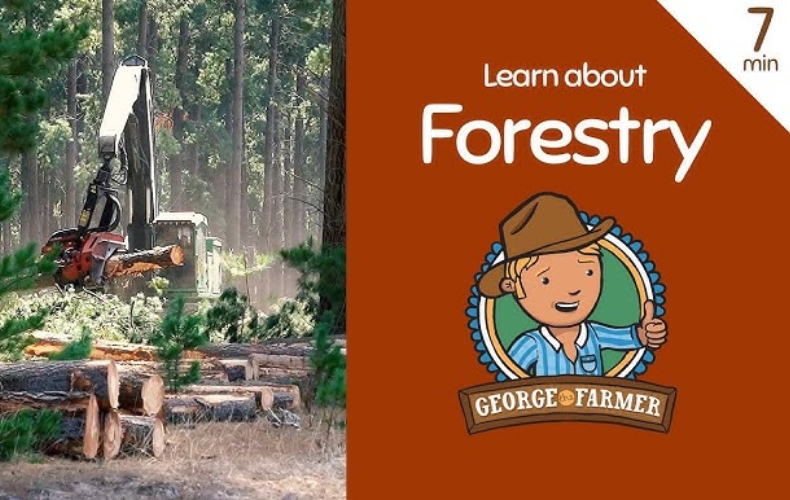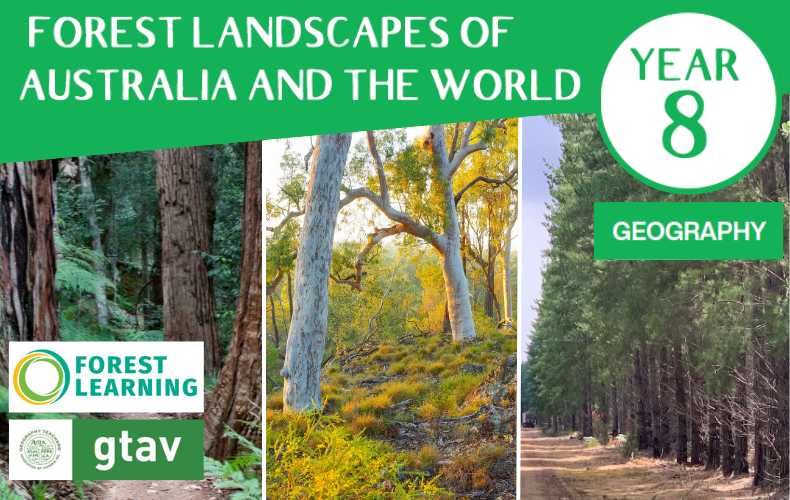FREQUENTLY ASKED QUESTIONS – FORESTS
Here are some of the most common questions that you may have about forests, forest management, forest services and wood products education in schools and their answers.
If you don’t find the information you’re looking for here, please check the related websites page that lists websites with further industry information or email us.
There are a number of websites which you can visit to gather additional information to support your class lesson. Simply go to the Related Websites section to view the full list. Remember, if there is anything you would specifically like us to develop please contact us.
Forests are ecosystems; a dynamic, constantly changing community of living things, interacting with non-living components. Forests are valued on social, environmental, cultural and economic factors, and are used, loved and appreciated by most people.
Forests in Australia cover approximately 125 million hectares or 16% of the Australian land mass, and include around 3% of the global forest area (Australia’s State of the Forests Report 2013, DAFF, 2014). Forests are areas of land dominated by tree cover that can reach at least 2 metres height at maturity, and include all other living and non-living things within, such as animals, plants, soil and water.
We need forests. They provide wood and non-timber products and services, play a key role in the fight against climate change, make an important contribution to our economy through supporting regional communities, as well as providing excellent opportunities for recreation and tourism.
Trees are essential to life on earth, performing an amazing, life-sustaining role through their ability to combine sunlight, water, nutrients and carbon dioxide to produce woody biomass and release oxygen that supports all life.
Forestry is the practical application of scientific, economic and social principles used in the establishment and management of forests. It encompasses the management of natural forests and woodlands, plantations, and the various combinations of trees and agriculture known as agroforestry or farm forestry. The practitioners of forest and plantation management are known as forest scientists, or foresters.
A unique aspect of forestry is its long-term focus on the sustainability of tree-dominated ecosystems. This requires foresters to deal with both day-to-day variables, such as weather and pests, and the future view which can be more than 100 years away. Planning is therefore integral to forest management; short term planning for seasonal activities each year, such as bushfire prevention, and long term planning, including timber harvesting to ensure that all other activities contribute to the enduring objectives of management and sustainability.
While timber is a renewable material and can even be used to generate energy, forests are the source of logs and need to be managed in such a way to provide consistent quantities of timber in perpetuity. That is the essence to the concept of ‘sustainability’.
There are measures of what is sustainable for most of our natural resources, whether it’s water supply, agricultural outputs, or minerals. Mined products, while not renewable, can be provided at a sustained level and recycled, for a time, but eventually the accessible raw sources decline and supply levels cannot be sustained.
Sustainable forest management (SFM) refers to the management of our private and public forests to ensure they continue to provide not only a sound supply of renewable timber for present and future generations, but also maintain their environmental values and social services.
Timber and wood products come from a living, growing, self-sustaining resource – it is hard to imagine life without them? Consider the many products used by society that come from parts of trees harvested from commercial forests, including:
- Wood for telegraph and power transmission poles, wharf and bridge timbers, railway sleepers, posts for building and agriculture, timber in housing (roof trusses, flooring, frames), outdoor furniture and decking, boat-building and fit-out timbers, veneers and solid timber for fine furniture, cabinet making and plywood, and craft wood. Offcuts and waste are used for firewood, pulpwood for paper, sawdust for garden mulch or as heating fuel. Wood waste is increasingly being used in engineered wood products such as wood plastic composites.
- Leaves – floristry, essential oils, extracts used for medicinal, cosmetic and industrial purposes.
- Flowers, fruit – a source of pollen and nectar for honey-producing bees, edible foods, seeds and floral decorations. Large branches and bole wood not suitable for milling – woodchips for pulping or compacted heating fuel pellets, craft wood, firewood, char for silicon manufacture, and essential oils. Cellulose for paper, rayon, cellophane, photographic film, biofuel and cardboard. Lignin for fertilisers, plastics, ceramics and tanning.
- Bark – oil, dye, tannin, compost and medicines.
- Saps – used in paints, varnishes, soaps, oils, waxes, explosives, printing inks, disinfectants, perfumes, chewing gum, glues and ointments.
- Tree parts can be distilled or treated to produce pine or eucalypt oil, resin, turpentine, charcoal and wood tar.
People have used forests for tens of thousands of years – for everything from recreation and inspiration to industry and employment. As the earth’s climate changes, the things we have learned about the global role of forests will help us manage them for the future.
Australia has some of the most beautiful and productive forest areas in the world. These fantastic and magical places mean a lot of different things to different people:
- Some of us work with the wood from the forests
- Some work with the creatures that live in the forests
- Some people live in the forests and some play in the forest (camping, hiking, exploring)and
- Many of us just love looking at and being in a forest!
Australian forests provide us with products we use everyday. From house frames to floorboards, furniture to newspapers, forests are essential to everyday life. Not only do forests supply timber for our needs and employment for local industry, they are also managed to protect animal habitats, and air and water quality. Plus they provide for a myriad of recreational opportunities; from bushwalking, camping and bird watching, to mountain bike riding, car rallies and adventure sports.
The challenge for foresters is to balance the competing needs and uses of forests. The future of our forests is in the hands of professional foresters trained to sustainably manage these valuable natural resources!
Across the globe, communities are seeking ways to shift natural resource use from unsustainable exploitation to a well-managed and sustainable basis.
People want industry and government to lead the way in reducing our dependence on finite and exhaustible resources that are becoming harder and more costly to obtain, and can only be used once. Oil and gas derived from fossil sources, and minerals extracted from the earth are major examples. Industrial westernised societies, including Australia, have been and continue to be massive users of these non-renewable natural resources.
In contrast to this, forests are an example of a renewable resource. They produce renewable products such as timber and play a vital role in various natural cycles, including the water, carbon and nitrogen cycles. As a society we have the opportunity and incentive to preferentially use renewable materials that can be carefully managed to produce a perpetual supply. We also have a moral obligation to help preserve natural resources for future generations.
Trees have a natural ability to concentrate and store carbon. Through photosynthesis, trees absorb carbon dioxide (CO2) from the atmosphere and convert it to sugars. These sugars, including glucose, are then used as energy and storage material to build cellulose and lignin, the main constituents of wood.
Did you know that carbon accounts for around 50% the dry weight of a tree?
When trees are harvested and manufactured into products, this carbon remains stored for the life of the wood product, and can continue to reside in the wood for a considerable time once the product’s service life ends, depending on how it is disposed of.
Only when a tree or wood product decays or is burnt, does the carbon return to the atmosphere for further cycling in what is commonly referred to as the ‘Carbon Cycle’.
Forests are an important sink for carbon in this cycle because they help to offset carbon dioxide emissions and other greenhouse gases that would otherwise contribute to climate change.
One of the best ways to address climate change is to use more wood, as it is the most abundant, biodegradable and renewable material on our planet.









